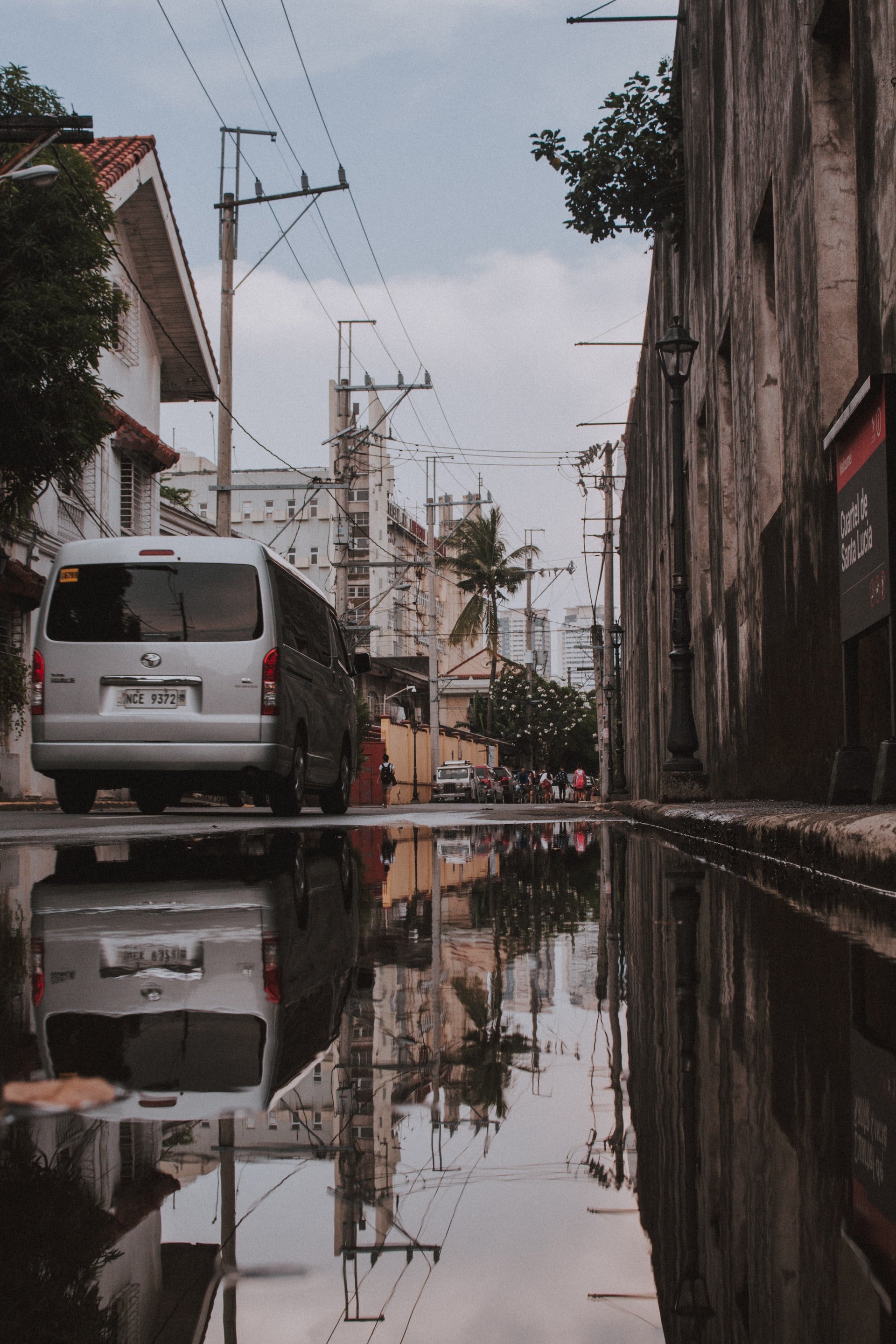Transport Options When Getting Around the Philippines
Do you know that traveling around the Philippines is relatively easy? Having around 7,600 islands, the transportation systems in the country are more or less well connected. Through the numerous comfortable and flexible transport options available, travelers can explore different adventure destinations in the Philippines. Certainly, you will be excited to reach the alluring tourist spots through a plane, ferry, boat/banca, bus, car, or motorbike.
How is the Public Transportation System in the Philippines?
Relatively speaking, the public transportation system of the country is dependable. Even if it is sometimes challenging to find the right bus stop or terminal in the Philippines, especially in larger cities, touring around the country by public transportation is worth the experience.
Traffic congestion in urban cities might be scary when visiting the Philippines. But, here’s the catch. Learning how to get to these cities and knowing how the Philippines’ public transportation system works can save you from getting travel mixed-ups.
How to Travel Around by Bus in the Philippines?
You are planning to tour around the country for an adventure, right? Have it by bus as it is a typical way to travel to the Philippines. Buses are classified as city buses, provincial buses, and Point-to-Point (P2P) buses.
City buses to transport passengers within the city at a shorter travel time. Provincial buses carry commuters from one province to another. Point-to-Point (P2P) buses to transport passengers from the pick-up terminal to the drop-off point.
-
How to Ride an Air-Conditioned Bus in the Philippines?
It is recommended to bring a jacket, a pair of socks, a pillow, or a blanket when traveling by an air-conditioned bus in the Philippines, especially on long journeys These buses can become quite cold during night travels. There are air-conditioned buses that have a toilet, more comfortable seats, bigger leg space, and bunk beds for passengers on a long overnight trip.
-
How to Ride a City Bus in the Philippines?
You might be wondering what riding a city bus looks like. Since it doesn’t have fixed schedules, you need to patiently wait for the bus to pass by the roadside or arrive at the bus stop.
Before Covid-19, cash was the only method of payment used in a city bus. The bus conductor will ask your payment for the fare as the bus starts to hit the road.
City buses in the Philippines, including provincial and point-to-point buses, do not accept credit or debit card payments. Use cash and Beep Cards instead. Beep cards are reloadable and contactless prepaid cards that can be used to pay fares for trains and all types of buses in the Philippines.
Where to buy these cards? Grab them in the 44 train stations in LRT and MRT lines. Top-up or reload in Ticket Vending Machines (TVMs) in train stations, Family Mart, and Ministop convenience stores in Metro Manila. You can have it through Coins.ph app too.
-
How to Ride an Ordinary Bus in the Philippines?
When traveling by an ordinary bus in the Philippines, be prepared to get dusty and damp. Bring a face towel or wet wipes and a bottle of water during daytime travel,because it can get really hot. Ordinary buses are often outdated, have narrow, uncomfortable seats, non- air conditioned, and are mostly overloaded.
Although most buses in the Philippines do not have toilets and power sockets, they usually stop around every 3 hours for bathroom breaks and buying snacks. Ordinary buses in the Philippines are ideal for individuals who want a more economical distance travel.
Note: When riding an ordinary bus in the Philippines, always keep an eye on the bus, as it stops for restroom breaks, so that you won’t be left alone by the roadside.
-
How to Ride a Provincial Bus in the Philippines?
If you look forward to riding a provincial bus in the Philippines, be sure to know the bus departure schedules of the different terminals. For a fully-planned and longer trip by bus on Philippine holidays, buy your tickets at least one week in advance at the bus terminal to reserve seats ahead of time.
Be a chance passenger otherwise, and purchase a bus ticket straight from the bus conductor or at the counter on the day of the trip. Know the exact location of the bus terminal or bus stop by visiting the nearest available tourism center or asking the local people for assistance. You may also check the bus operator’s Facebook page or website the day before your planned trip to be informed about their departure schedule.
Note: Facebook is commonly used in marketing these days. Many businesses, including bus companies, post updates and recent infos on this social media platform.
Here’s another thing. Take notice of the time! When planning to ride a provincial bus in the Philippines, arrive at least one hour before your scheduled departure at the bus stop or terminal. Save yourself from the inconvenience by calling the bus company to confirm the correct schedule and terminal assignments.
These details frequently change without prior notice. Having a different terminal for every arrival destination can sometimes be confusing especially for foreign travelers like you. So, it pays to check these essential information ahead of time.
When the destination is pretty close, prepare your things. Most public buses in the Philippines stop by the road and on unofficial terminals or main hubs at a very limited time. Request the bus conductor to help you out with your luggage in the compartment, quickly get off the bus, and keep attention on the traffic.
Note: Public buses in the Philippines usually leave as soon as they are full.
What are the Major Bus Companies That Operate in the Philippines?
Here is a list of bus companies that actively operate in the different regions of the Philippines. We will keep this list updated for your reference.
Yanson Group of Bus Companies is the biggest land transport company in the country, with more than 12,000 bus units traveling to different locations across the archipelago. It is also the biggest bus company in Asia.
Although it is less known to people outside the Island of Panay and Negros (Western Visayas), this transport company owns famous bus lines namely:
Ceres Bus Liner is based in Batangas City (Calabarzon Region in Luzon) and operates in Batangas to Manila route. It also serves RoRo from Manila to Dumaguete. Although most of its terminals are situated in Mindanao and Visayas, it has one terminal in Cubao (Metro Manila, National Capital Region).
Vallacar Transit offers public transport in Negros and Panay Islands (Western Visayas). It has terminals in Bacolod, Western Visayas (specifically Mandalagan, Bacolod City, and Bacolod City South Terminal).
Bachelor Express travels in different destinations across Eastern and Central part of Mindanao, with bases in Butuan City (Caraga Region, Northern Mindanao) and Davao City (Davao Region, Southern Mindanao)
Rural Transit of Mindanao serves Northern and Western part of Mindanao commuters, with headquarters in Cagayan de Oro (Northern Mindanao) and bases in Pagadian (Zamboanga Peninsula), Dipolog (Zamboanga Peninsula), Yacapin and Bulua (both located in Cagayan de Oro, Northern Mindanao).
Locally known as Five Star, Pangasinan Five Star Bus Company is a bus transport company that operates in Ilocos Region (Pangasinan), Central Luzon Region (Nueva Ecija), and Cagayan Valley (Quirino, Isabela and Cagayan). Its terminal is in Tayug, Pangasinan (Ilocos Region).
Victory Liner Incorporated is one of the biggest provincial bus transport companies in the Philippines that travels in the provinces of Central Luzon including Bulacan, Pampanga, and Zambales. It also serves Northern Luzon passengers, specifically Pangasinan, Benguet, Kalinga, Nueva Vizcaya, Cagayan, and Isabela.
Its terminals are located in Cubao (Manila, National Capital Region), Pinyahan (Quezon City, NCR), Pasay (South of Manila, NCR), Sampaloc (Manila, NCR), Caloocan (Metro Manila, NCR), Zambales (Central Luzon), Bataan (Central Luzon, Pangasinan (Ilocos Region), Benguet (Southern Cordillera Administrative Region), Isabela (Cagayan Valley, Luzon), and Tuguegarao (Southern Cagayan, Cagayan Valley Region).
Philippine Transport Company or Phitranco has been transporting bus passengers from Luzon to Mindanao since 1914. It is not just the oldest bus company in the Philippines, but also one of the biggest in the country. Two terminals are conveniently situated in Pasay (South of Manila, NCR) and Cubao (Manila, National Capital Region).
JAC Liner operates in North and South Luzon after acquiring Dagupan Bus. It has been providing quality public transport services to local and foreign passengers since 1987. JAC Liner Terminals are in Lucena City (Calabarzon Region), Pasay (Metro Manila, NCR), Kamias Quezon City (Metro Manila, NCR).
Baliwag Transit Inc. has terminals located in Central Luzon (Nueva Ecija, San Jose, Baliuag, and Cabanatuan). It mainly serves routes from Central Luzon to Metro Manila and vice versa.
Genesis Transport Service Inc. is also known as Genesis, this provincial bus company travels routes connecting Metro Manila to Central Luzon and Northern Luzon. Its terminal can be found in Nueva Ecija (Central Luzon).
How to Travel by Ferry in the Philippines?
You have known the Philippines as an archipelago. With that in mind, you might have also imagined yourself exploring the main islands of the country by ferry. Ferry travel in the Philippines is inexpensive but can be a bit slow, especially with big cargo vessels.
-
What are the Main Ferry Companies That Operate in the Philippines?
Now, you are probably wondering what ferry companies to choose when exploring the wonderful adventure destinations in the country. Traveling by ferry in the Philippines is generally safe because the government authorities ensure that no voyage is allowed when there is an impending storm or typhoon forecasted. Check the latest weather advisories before you plan to travel by water.
Take note of the main ferry companies that operate in the Philippines.
• 2Go Travel - Batangas, Butuan, Cebu, Cagayan de Oro, Dumaguete, Dipolog, Iligan, Iloilo, Manila, Caticlan, Odiongan, Ozamiz, Puerto Princesa, Romblon, Roxas City, Coron, Zamboanga
• Montenegro Lines - Batangas, Odiongan, Romblon, Magdiwang, San Agustin, Roxas, Dumangas, Iloilo, Cuyo, Dumaguete, Lucena, Masbate, Allen, Lipata, Surigao, Bogo, Zamboanga
• Oceanjet - Bacolod, Batangas, Calapan, Camotes, Cebu, Dumaguete, Iloilo, Larena (Siquijor), Ormoc, Siquijor, Tagbilaran
• Trans-Asian Shipping Lines - Cebu, Cagayan de Oro, Davao, Iligan, Iloilo, Masbate, Ozamiz, Tagbilaran
• Super Shuttle Roro - Batangas, Calapan, Jagna (Bohol), Camiguin, Balingoan (Camiguin), Benoni (Camiguin), Hagnaya, Sta. Fe (Bantayan Island), Bogo (Leyte), Palompon (Leyte), Dapitan, Dumaguete, Roxas City, Caticlan.
• Supercat 2GO - Batangas, Bacolod, Calapan, Cebu, Iloilo, Ormoc, Tagbilaran -
What Companies Offer Fast Ferries in the Philippines?
You will surely be amazed by the high-speed crafts that can tour you around the Philippines at shorter distances. Also known as fast ferries, these are usually smaller than ships and can bring you faster to your destination. To know more about the companies that offer fast ferries and ports in the Philippines, read on.
• FastCat - Batangas, Calapan, Bulalacao, Caticlan, Matnog, San Isidro, Dapdap, Iloilo, Bacolod, San Carlos, Toledo, Bohol, Dumaguete, Dapitan, Surigao del Norte
• OceanJet - Bacolod, Batangas, Calapan, Camotes, Cebu City, Dumaguete, Bohol, Iloilo, Siquijor, Romblon, Ormic, Misamis Occidental
• Phimal Fast Ferries - Coron and El Nido
• Supercat - Batangas, Bacolod, Cebu, Iloilo, Ormoc, Calapan, Tagbilaran -
How to Book Ferry Tickets in the Philippines?
As soon as you arrive at the port or pier, buy your tickets from the right operator and check if it reflects the right destination, departure gate or pier, and schedule before paying. Remember! Transact only with authorized or licensed ferry operators in the Philippines. You may also check out these Philippines ticket resellers’ websites to book your ferry tickets online.
• https://www.barkota.com/
• https://www.directferries.com
• http://www.phbus.com/ferry-operators/Similar to other transport options in the Philippines, ferries can leave as soon as they are filled with passengers. Meaning, it will not wait for you even if you have a confirmed booking. Therefore, you need to be there one hour earlier than your official time of departure.
Another thing, make sure that your name is listed in the passenger manifest, and have signed it upon buying your ferry ticket. Take a look at your ticket class assignment, if there is any.
When you are traveling by ferry on longer routes, you do not have to worry about finding a place to rest. Big vessel operators provide bunk beds or rooms to ensure a comfortable trip for travelers. You also have an option to stay inside their air-conditioned multi-purpose hall if you book the premium ticket accommodation.
Open-air areas with benches are also made available for passengers who are on shorter ferry trips in the Philippines. Sounds interesting, isn’t it? So give it a try, will you?
Most of the Passenger Ship Liners and Fast Ferries in the Philippines give you an option to book your ticket according to your need and comfort.Note: When going on a long trip by ferry in the Philippines, make sure to bring a power bank because charging stations and sockets are occupied most of the time.
How to Travel by Boat/Banca in the Philippines?
If boat riding is your thing, you can never go wrong with island to island travel in the Philippines by boat or banca. Bangka or banca, as what locals call it, is a typical small Philippine-made outrigger boat that can transport tourists between islands of short distances. It is made of wood, usually rattan, bamboo, and fiberglass. It comes in different styles and is very common in the Philippines.
-
Is it Safe to Travel by Boat/Banca in the Philippines?
You might be asking if traveling by boat is safe. Here’s a thing. In the Philippines, almost anyone living on the coast owns a motorized bangka either for fishing or for hire. You’ll be happy to know that the Philippines is gifted with resilient and experienced boatmen all over the country.
For some families, boating is a tradition that is passed down from generation to generation. In fact, kids of boat owners are trained early on and become part of the crew. So, don’t be surprised to see young boys helping the passengers carry their luggage and things on the banca.
Traveling by boat or banca is generally safe. But make sure to negotiate only with authorized boat/banca operators.
Still not convinced? The Philippine Coast Guard constantly regulates activities of these authorized banca operators to ensure utmost observance to the boat travel regulations and safety requirements set for sea travels in the country. Availability of life vests in bancas and the regulation of passengers on board are in place.
-
When is the Safest Time to Travel by Boat/Banca in the Philippines?
For local and foreign adventure lovers, it is essential to know the safest time to travel by boat. When the tide is low or calm, the safest time to travel by boat/banca in the Philippines is day time. In no way that your boat operator will let you travel if the weather forecast is unfavorable and if the boat has technical issues.
At this point, you might have known that boat trips in the Philippines can change frequently. Sometimes trips can be hourly, once or twice a day. So make sure to visit the terminal ahead of time or call the boat operator for the correct schedule.
-
How to Buy Boat/Banca Tickets in the Philippines?
After deciding to have an adventure in the Philippines by boat, it is perfect to know that buying a boat/banca ticket is relatively easy. Yes, you heard it right. All you need to do is go to the port or terminal and ask where the ticket booth is. There are times that you are required to pay port fees and environmental fees.
One more thing! Before you hop in for a boat ride, make sure to log your name and personal details on the operator’s logbook.
Note: It is important to bring snacks and water during a boat/banca trip. If you tend to get seasick easily, have your medicines or candies ready for a smooth journey.
How to Travel by Plane in the Philippines?
Currently, the Philippines has around 70 airports, 16 of which are international airports (or paliparan in its local name). Traveling around the Philippines by plane is generally the quickest and most comfortable option to reach long-distance adventure destinations in the country. Take advantage of cheap airline tickets by booking months in advance.
-
What are the International Airports in the Philippines?
Departure times and gate assignments are often changeable. Save yourself from any travel inconvenience by confirming your flight the day before your departure schedule. It is recommended to arrive at the airport earlier than your scheduled flight, and to spend enough time planning for transfers. Feel free to check the list of International Airports in the Philippines.
1. Ninoy Aquino International Airport (MNL) - Pasay City, Metro Manila
2. Clark International Airport (CRK) - Mabalacat, Pampanga
3. Mactan-Cebu International Airport (CEB) - Lapu-Lapu City
4. Francisco Bangoy International Airport (DVO) - Davao City
5. General Santos International Airport (GES) - General Santos City
6. Iloilo International Airport (ILO) - Cabatuan, Iloilo
7. Kalibo International Airport (KLO) - Kalibo, Aklan
8. Laoag International Airport (LAO) - Laoag, Ilocos Norte
9. Bohol-Panglao International Airport (TAG) - Panglao, Bohol
10. Puerto Princesa International Airport (PPS) - Puerto Princesa, Palawan
11. Subic Bay International Airport (SFS) - Morong, Bataan
12. Zamboanga International Airport (ZAM) - Zamboanga City
13. Cagayan North International Airport (CNIA) - Lal-Lo, Cagayan
14. Bicol International Airport (BIA) - Daraga, Albay- completion by June 2021
15. Laguindingan Airport- Misamis Oriental - opened in 2013
16. Bacolod-Silay International Airport- Negros OccicentalAmong these international airports, Ninoy Aquino International Airport (NAIA) in Manila is the biggest with four terminals. Terminals 1, 2, 3 and 4 are located a bit far from each other.
-
What are the Local Airline Operators in the Philippines?
Many new airports in the Philippines started to accommodate larger aircraft projects nationwide to cater the increasing tourism demands in the country. Here are the current airline operators in the Philippines that you would like to know about:
• Philippine Airlines (PAL) - This is the Philippines’ flag carrier owned by business tycoon Lucio Tan. Most PAL planes are spacious, and you can expect wider seats. But, it charges the highest fare among Philippine airline companies.
• Cebu Pacific - At present, this privately-owned Philippine carrier airline owns 61% of the market share and offers flights in almost all local and Southeast Asian destinations.As a budget airline, Cebu Pacific is popular among local tourists and foreign backpackers. But a few heads up for you! It offers less legroom capacity, limited service, and no meals or entertainment on short trips.
• AirAsia - This Malaysian-owned airline also offers budget flights all over the Philippines. The operation is a joint venture between Filipino investors and AirAsia company.
• PAL Express - Owned and operated by Philippine Airlines, PAL Express which offers budget flights around the Philippines.
• SkyJet - It is not a budget airline per se. SkyJet offers safe and quick flights to a few Philippine destinations, including Coron, Batanes, Siargao, and Camiguin. This is a Filipino-owned airline company.
• AirSWIFT - Similar to SkyJet, this ‘boutique’ airline offers flights exclusively to Caticlan, Cebu, Bohol, Coron, and El Nido. It has propeller planes that fly to El Nido and operates exclusively in a private airport in El Nido, Palawan.
How to Book a GRAB Service in the Philippines?
Do you want to get to your destinations by a private car? GRAB is what you need. It is an Asian taxi booking and dispatching service in the Philippines that drives you to your destination by a pre-booked private car. It is a mobile app that works similar to UBER. Sounds interesting, right? So, make sure to download the GRAB app on your mobile phone and treat yourself with a convenient and amazing ride.
This is ideal for tourists like you. Why? Simple! You can never get lost when you have a GRAB driver who knows the different locations of terminals and adventure spots in the Philippines. To avail this service, set the pickup and drop off location via the app, and get yourself ready to be fetched by the nearest available GRAB driver.
Traffic in the Philippines can be bad, especially during the holidays or rush hour. When traveling in bigger cities during rush hour, you need around 3 hours extra time so that you won’t miss your scheduled flight.
What’s with the 3 hours allowance, you may ask. Here’s the kicker. There might be long queues when checking in your bags, especially during the Philippine holidays or other international and national events. So, it pays to be earlier than the schedule.
Many Filipinos are now enjoying the benefits of major infrastructure and transportation enhancements in the Philippines. You can find these updates and news here .
Hand-Carry Baggage Allowances for Domestic Flights in the Philippines
Your free hand-carry baggage allowances for domestic flights in the Philippines may vary from one airline company to another, and can change without prior notice. It is important to follow their policies to avoid any inconveniences.
Philippine Airlines, Air Asia Airlines, and Cebu Pacific Airlines allow one hand-carry bag of no more than 7 kg. and dimensions of 56 cm. x 36 cm. x 23 cm. for each passenger. Handbags and laptop bags that can fit under the seat are also allowed.
Check-in Baggage Allowance for International Flights in the Philippines
If you want to have an idea on the check-in baggage allowance for international airline flights in the Philippines, you’ve come to the right spot. All international airline flights have their own free checked baggage allowance. Make sure to weigh your bags before going to the airport. If needed, get an additional baggage allowance online, prior to your flight.
Below are the policies on hand-carry allowance in International Airline companies in the Philippines. They can change without prior notice, so always check their details on their website or Facebook page.
-
International flights typically allow 20 kilograms of free check-in luggage with two pieces of bags (maximum). Charges for excess baggage are collected if it exceeds the allowed maximum weight.
-
International flights offer prepaid baggage allowance options of 20, 32, and 40 kilograms, which can be purchased in advance upon booking. It can be availed within two hours before departure through Cebu Pacific website, or at any other authorized sales office. Applicable fees are charged for overweight luggage.
-
International flights allow check-in baggage that ranges from 15 to 40 kilograms, which must be added upon booking or upon online check-ins. Fees at the airport are higher compared to pre-booking online in advance.
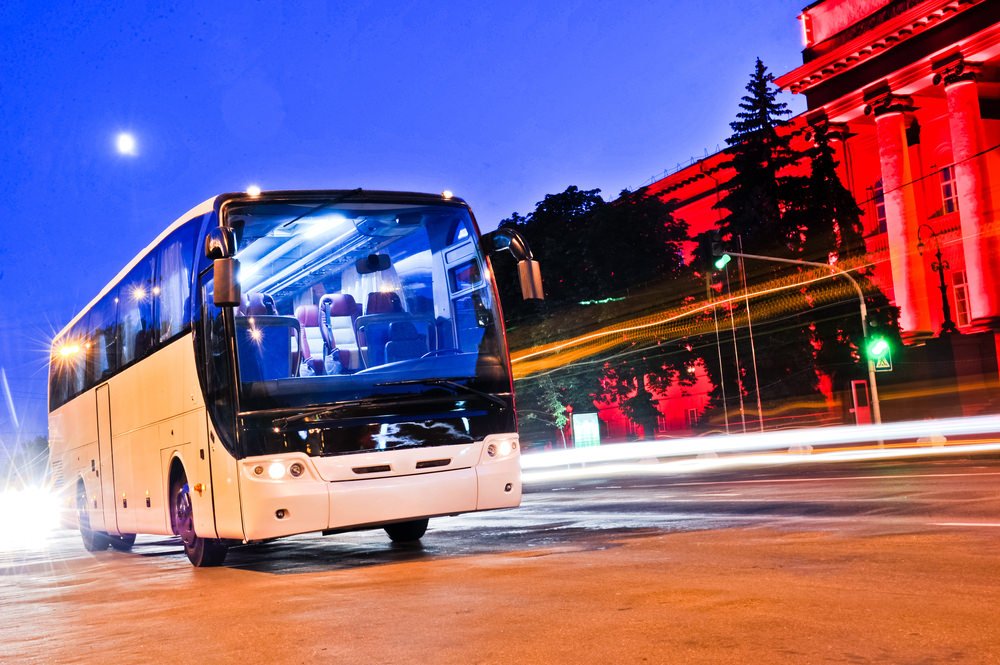
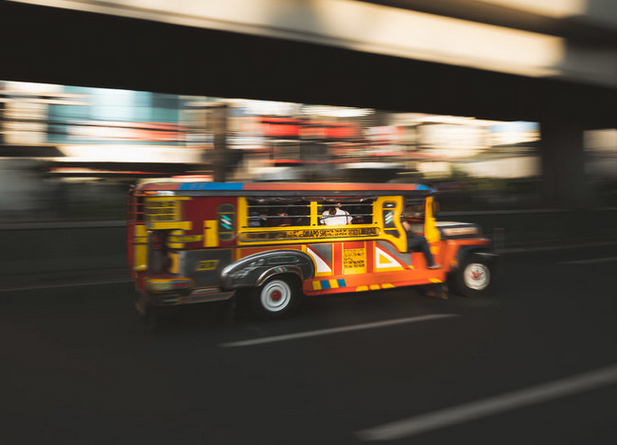
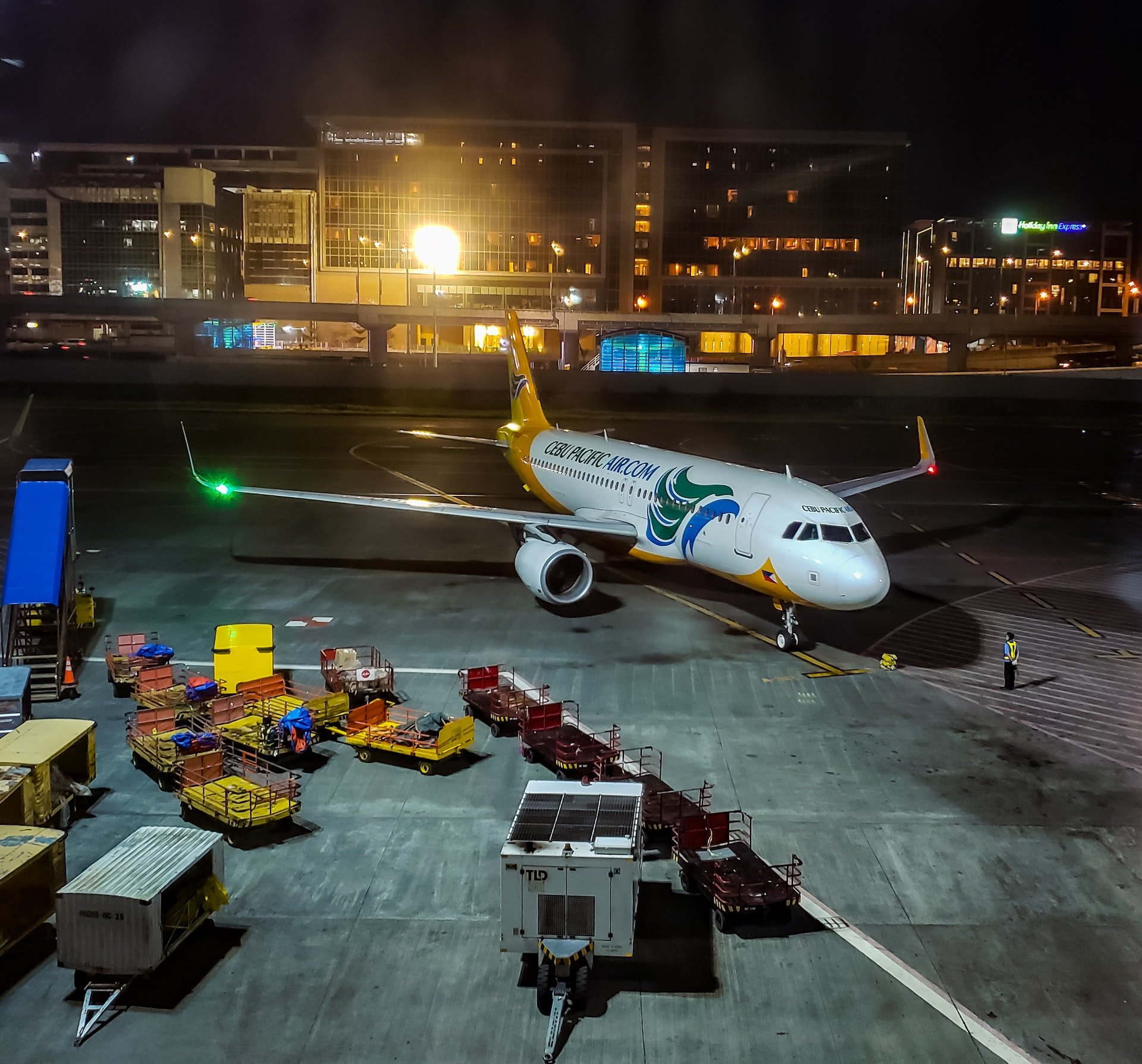
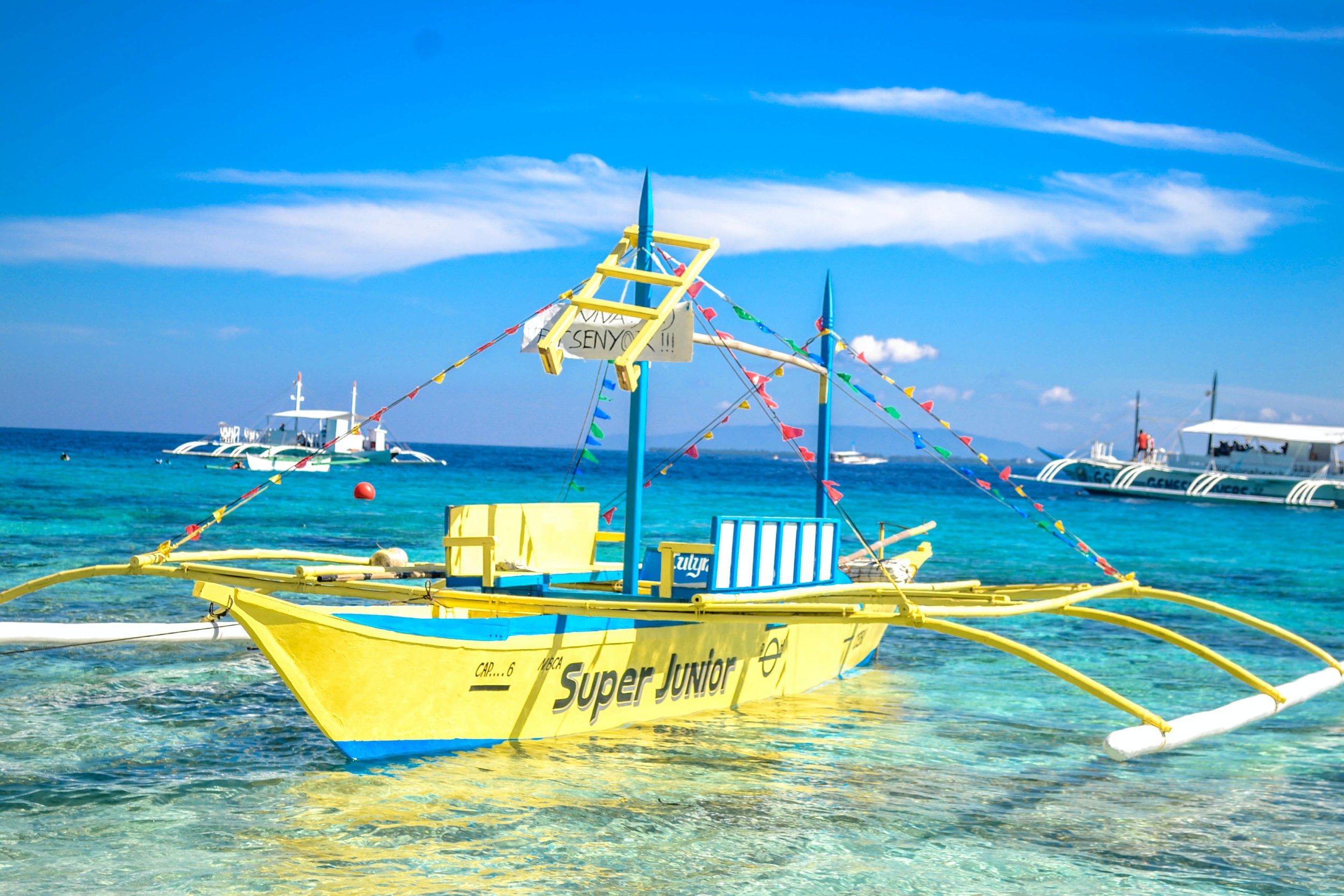
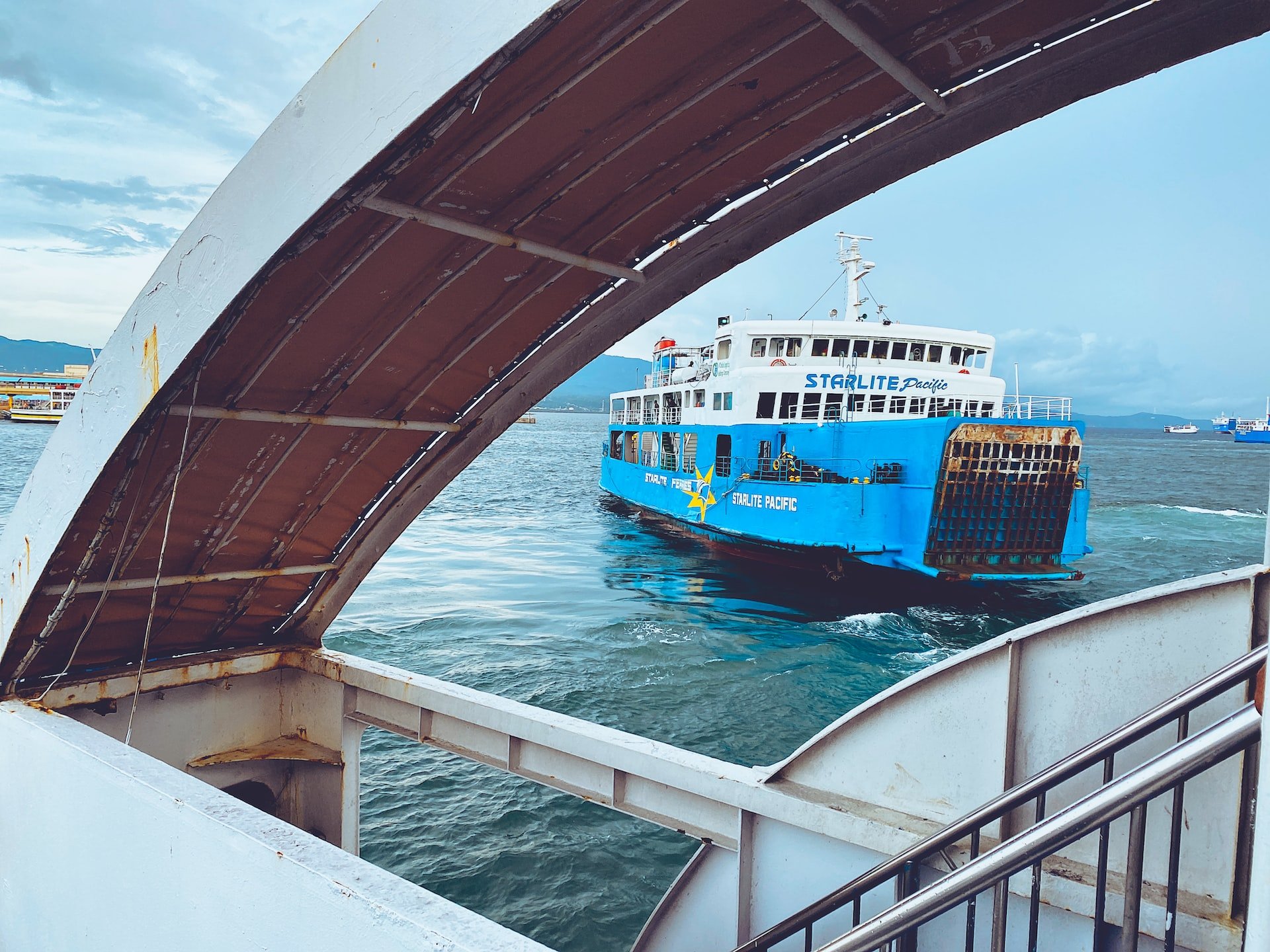
How to Travel Around by Jeepney in the Philippines?
Listen up! A Jeepney ride is another thing that you might want to try when touring around the Philippines. It is a unique local vehicle that is popular and culture-rooted. It offers cheap transportation options in the Philippines that can accommodate approximately 20 people sitting at the back in two rows, facing each other, and two more people on the front seats. Visible all over the country, Jeepneys are colorfully painted in different artistic styles.
-
Where Do Jeepneys in the Philippines Come From?
Jeepneys are a remnant of the U.S. Army occupation. They were developed from old Willys-Overland jeeps, U.S. military vehicles that were given or sold to Filipinos at the end of World War II, right after the American settlement in the Philippines in the year 1946.
Learn more about the American colonization in the Philippines timeline.
The jeeps were stripped down, altered, extended and visually customized showing the rich traditions of the Philippines. The two parallel benches at the back were added to allow more people to ride on them. Since then, the jeepneys have become a Philippines’ transportation icon and become popular public transport for locals.
-
How to Ride and Enjoy the Iconic Jeepney?
Although jeepneys in the Philippines provide a flexible and affordable transport option to locals and tourists, you might not understand its rules and fares. Jeepney fares are fixed, but often, drivers decide how much fare to charge, depending on the destination.
Even if its payment scheme is a little confusing, a jeepney ride can be a fun experience. If you are interested, make friends with the locals and have them join you on a jeepney ride. They will be more than happy to show you how the transportation system works in the country.
You’ll definitely enjoy the experience of sitting in a line with other locals and watching how the payment rules work. Just make sure to bring coins and small bills like PHP 20 to PHP 50. Remember to say “Para Po” upon reaching your destination so that the driver will pull the jeepney over and allow you to get off.
Note: It’s always fun to learn some useful Filipino words & phrases when coming to the Philippines.
How to Travel Around by Multi-Cab in the Philippines?
Like Philippine Jeepneys, a multicab is a public transport in the Philippines with fixed routes and rates. It is a small lightweight truck that can carry approximately 13 passengers to the most popular tourist destinations in the country. You can see multicabs hitting the road, especially those narrow ones, all throughout the Philippines.
How to Travel Around by Tricycle in the Philippines?
Thinking about getting around the Philippines in a fun way? Why not visit the country’s famous adventure destinations by tricycle? It is a Filipino-style motorcycle with a sidecar in varying colors and styles that operates everywhere in the country.
Hire a tricycle and enjoy a cultural experience in the Philippines. Whether it is a longer round trip adventure or a one-way trip to famous destinations (like beaches) in the country, negotiate the fare price before hopping on.
As one of the most common modes of public transportation for locals in the Philippines, a tricycle ride gives a wonderful experience to tourists. Depending on its design, tricycles can accommodate 5 passengers, 2 sitting at the back of the driver and 3 inside the sidecar. It can also carry big bags and loads of other things (like bamboo sticks and long steel).
If you are not sure of your way back to your accommodation in the Philippines, the best thing to do is hail a tricycle and tell the driver the right address. When you’ve reached your destination, just say “ para po” so that your driver can drop you off.
It is amazing to know that riding a tricycle in the Philippines is both economical and safe. Tricycle drivers in the Philippines need to secure a driver’s license and ensure that tricycles are well-maintained to be allowed to operate in streets. The city or barangay regulates its operation through a TODA or Tricycle Operators and Drivers Association .
How to Ride a Pedicab in the Philippines?
Looking for an ideal transport option for a short trip in the Philippines? Pedicabs can seal the deal. Similar to rickshaws, it is a human-powered mechanical bicycle with a sidecar. It is a cheap mode of transportation that carries around 4 passengers (maximum), making it perfect for short distance trips.
No matter where you are in the Philippines, the base fare for a pedicab ride ranges from PHP 10 or USD .20 to PHP 200 or USD 4 per person.
Pedicabs are allowed on small streets and alleys. For safety reasons, Pedicabs are not allowed on national highways all over the Philippines. It can tour people around the Barangay, a small local community in the Philippines, and transport them to their desired places at one kilometer distance.
How to Travel Around by Motorbike in the Philippines?
Does motorbike riding sound incredible? Well, give it a go! Traveling around the Philippines by a motorbike offers a flexible adventure in the country’s less-trekked tourist destinations.
Renting a motorbike in the Philippines is easy. Ask the locals or the accommodation for reliable motorbike rental that operates with a license and business permit. Licensed motorbike operators in the Philippines will inform you of the road situation and the possible challenges you might face under bad weather forecasts.
Click here for reliable motorbike tours in Palawan and the Cordilleras, Mountain Province.
-
How is the Motorbike rental rates in the Philippines?
Motorbike rental rates in the Philippines are usually based on the type of motorbike and the number of days you will rent them. For beginners, fun and easy bikes like around 150cc to 200cc are automatic or semi automatic Scooters and XRM (Philippines Semi Automatic Motorbikes). These bikes are ideal for use on concrete and some dirt roads. For more experienced bikers, the mix Enduro Motorbike with around 300cc and 500cc is ideal for longer Philippines motorbike adventures.
At this point, you might have known that tire shape matters. It is a good sign if the bike can work on dirt, gravel or concrete. When renting a motorbike in the Philippines, make sure to check the bike's conditions, including its brakes, tires, lights, body, and fluid levels (Fuel/Oil/Coolant). Make sure that everything works perfectly.
-
What are the Requirements When Renting Motorcycle in the Philippines?
Normally when renting a motorcycle in the Philippines, you need to pay the total amount of rent including the safety bond. You will also be asked to leave a copy of your passport and driving license. In the agreement, clearly state the time you rented the bike, the number of days you plan to rent them, and its condition. It is ideal to return the bike with the same fuel level as you took it over from the rental company.
Lastly, it is recommended to get travel insurance because it will save you from a lot of troubles in case you bump into an accident while hitting the road. An international travel insurance (Third Party Liability Insurance) covers expenses for damage or injury including third persons involved.

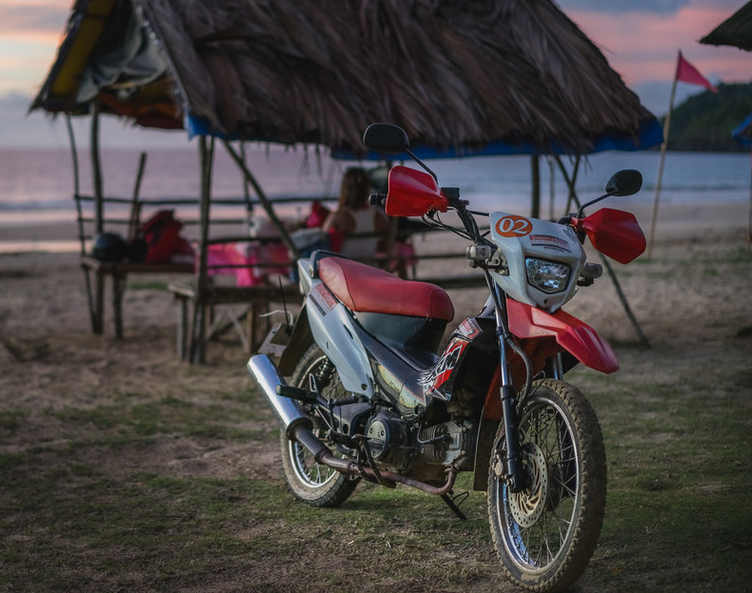
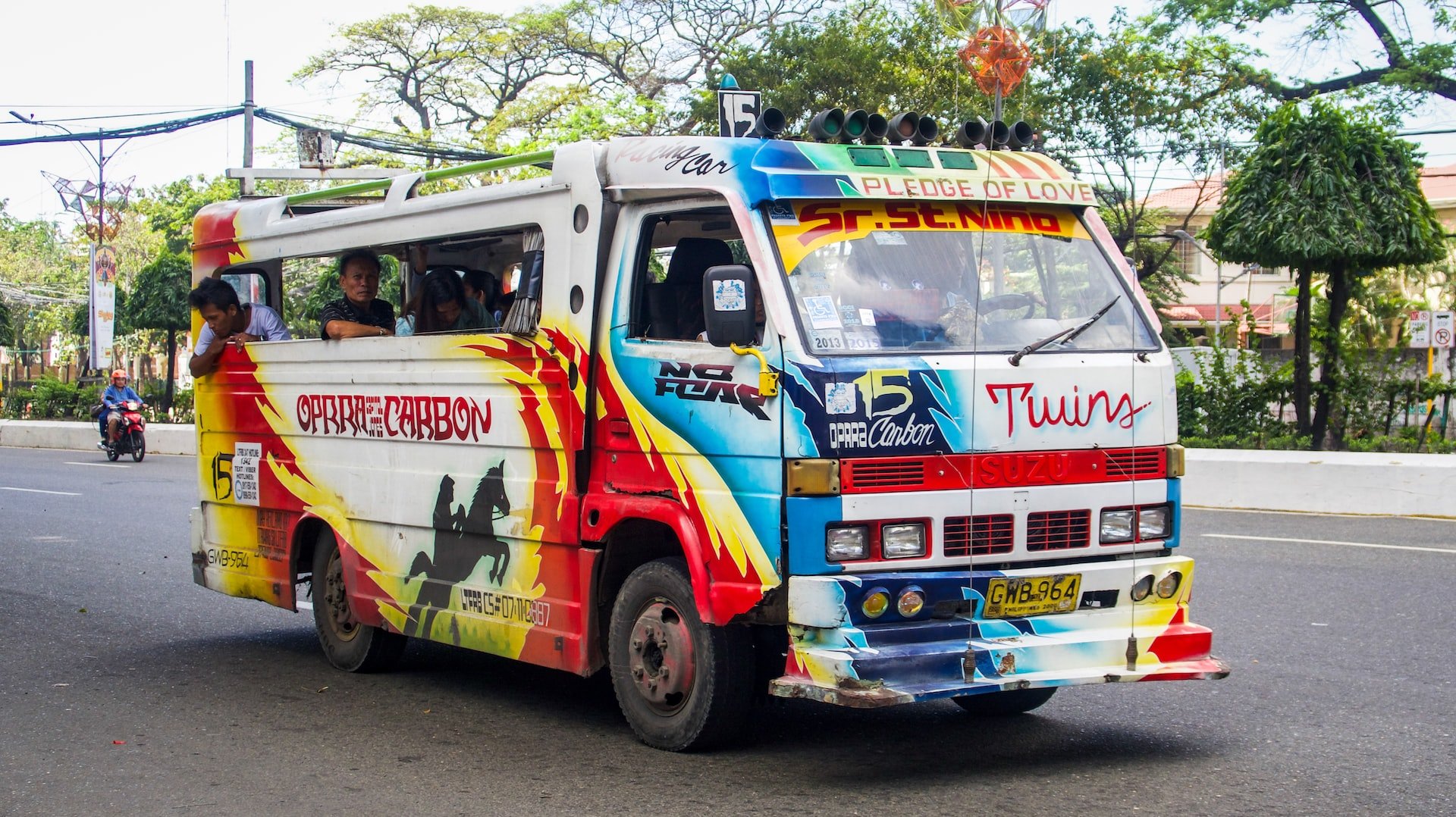
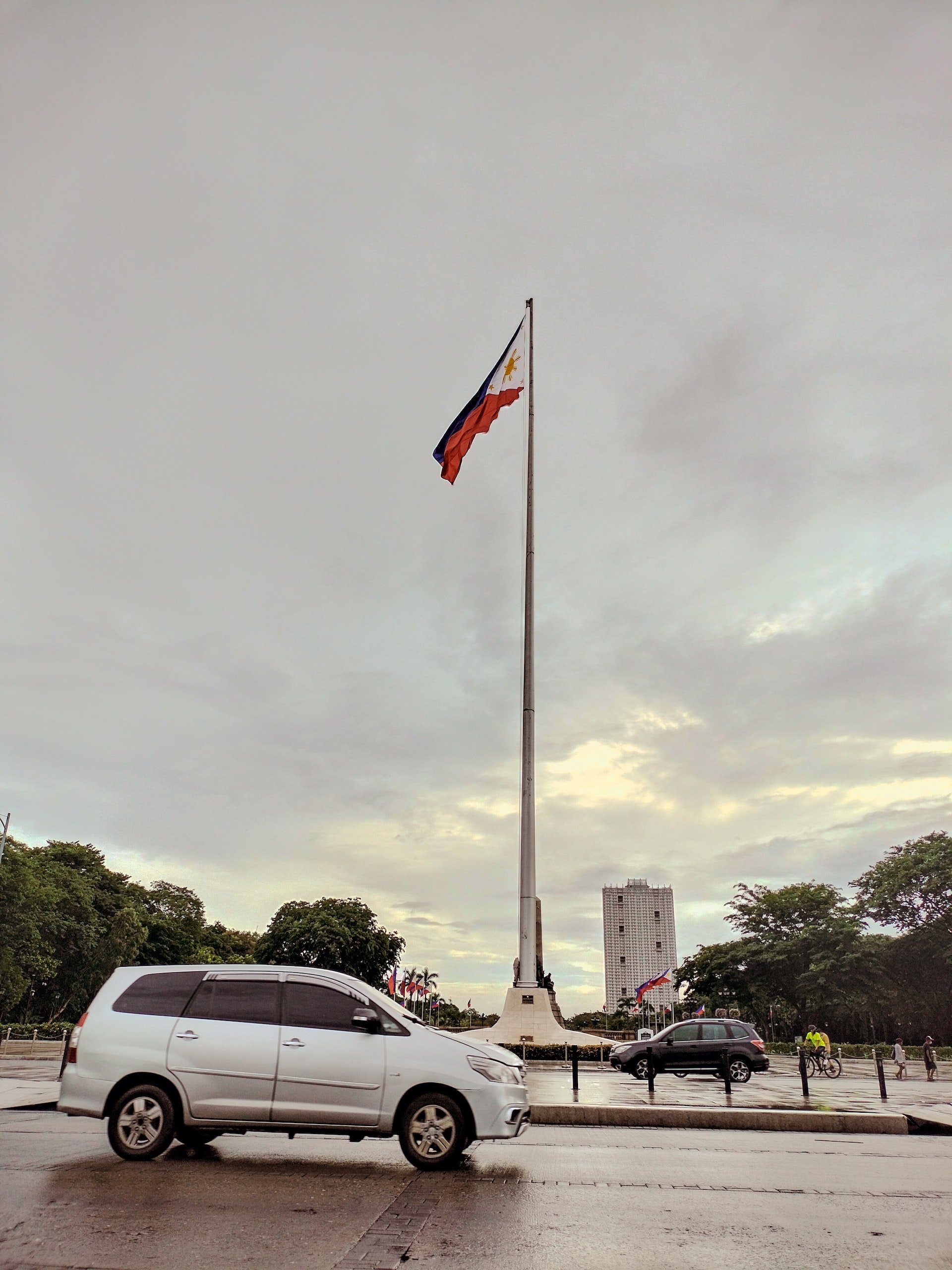
Motorbike Riding Safety Tips in the Philippines
Now that you have decided to explore the different adventure destinations in the Philippines by motorbike, you should lend an ear to a bunch of safety tips that you need to know to get protected while hitting the road on two wheels. Keeping an eye on these general rules and important riding safety reminders can help you achieve a satisfying trip to the Philippines without compromising your own safety.
Learn more about the safety tips below before and while riding a motorbike.
-
• Ensure that you have working headlights, direction indicators, and rear lights for safety especially when riding in the dark. Most rural places in the Philippines have no street lights and have many stray animals by the roadside.
• Prepare all the proper documentation like driver’s license (International), passport, and motorbike registration.
• If you are going on a long motorcycle ride in the Philippines, it’s highly suggested to bring extra tools and gear like spare spark plugs, tube inlet for a flat tire, petrol, and bike repair tools.
• Be aware of the motorbike’s fuel consumption. Refuel before you head off.
• Check the weather forecasts before you proceed to your destination. Many roads in the Philippines get very slippery when wet as mostly are paved cemented roads. So it’s best to avoid riding motorcycles under rainy conditions. Always check out the weather in the Philippines.
• Appropriate clothing and footwear is important. Motorcycle drivers in the Philippines are required to wear proper clothes and closed shoes when driving. Flip-flops, sandals, and slippers are prohibited. Wearing a helmet is obligatory in the Philippines law. -
• As a responsible driver, do not drink and drive. Always keep your eyes on the road and be alert for unexpected traffic happenings and road scenarios. Maintain safe distance from other vehicles and motorbikes.
• Even for short distances, wear a helmet with a Philippine Standard (PS) mark or Import Commodity Clearance (ICC) to ensure a safe trip.
• The Philippines’ Motorcycle Helmet Act of 2009 requires the use of PS or ICC certified helmets for both the driver and the back ride.
• Most main roads in the Philippines have direction signs, so make sure to follow them.
• Horn quickly before overtaking in the Philippines. Car horn, locally called busina, is used to warn other drivers of your presence or to call their attention if you plan to overtake.
• Some remote areas in the Philippines have limited access to petrol stations. Unless absolutely necessary, avoid buying “cheap fuel” in bottles from street vendors to avoid damage to the engine.
How to Travel Around by Car in the Philippines?
Traveling by car in the Philippines is one easy way to explore the must-visit destinations in the country. Renting a car in major cities is never a challenge because of the many licensed car rental companies that offer reasonable rates. But, here's a heads-up. These rates can go higher during travel seasons.
To rent a car, present a valid passport and an international driver’s license. You may also be asked to set a cash deposit using a major credit card.
Driving Safety Tips to Travel Around by Car in the Philippines:
-
• Before getting the car key, make sure to verify the vehicle’s registration papers (Official Receipt and Car Registration documents from the Land Transportation Office or LTO). Check if the plate number is similar to the ones reflected in the LTO documents and insurance papers.
• Prepare all the proper documentation including your international driver’s license and passport, and know where to go and how to navigate.
• Carefully check the general condition of the car you are renting, including the lights, tires (spare tire as well), and liquid levels (fuel, engine oil and coolant).
• Ensure no leaks by having a quick look under the car and engine bonnet.
• Pay attention to the car’s fuel consumption. It is best to have it fully-tanked for a smooth and comfortable adventure. Fuel stations in the Philippines, especially in rural areas, are becoming rare.
• Ask the details about the car’s insurance from the renter, and be familiar with its inclusions. It would be best if you have your own international insurance to cover your own damage and third-person injury in cases of road accidents.Note: The Philippines also has a number coding system or color coding. To reduce traffic, it restricts the vehicles driving around Manila to use the main public roads based on the vehicle’s final digit of the license plate.
-
• Driving around the Philippines is pretty safe. You just have to be aware of the Philippines’ left-hand drive system.
• Keep an eye on the road and think ahead of the traffic in front of you. Unexpected road occurrences often happen. So, it helps to have a sharp foresight at all times.
• You may encounter careless motorists and pedestrians who don’t follow road signs or stop lights. Defensive driving is highly recommended when traveling Philippine roads by car. Respect other drivers, as Filipinos are known for such character.
• Driving at night in the Philippines is less preferable because many provincial and city roads are not well-lit. In fact, you can see people and animals by the roadside.
• Make sure to use the car horn when you are at the road junction and most especially when you want to overtake. Hitting the busina, or the car horn steers you clear from intersection accidents when driving in the Philippines.
• As mentioned above, return the car with the same level of fuel the moment you borrowed it from the car renter.Note: Renting a car provides you with the luxury of going on flexible and adventure road trips in the Philippines. From Manila, you could drive up North of Luzon to Baguio, Hundred Islands or Ilocos, or South of Luzon to Tagaytay, Batangas, Albay or Sorsogon in the Bicol Region.
How to Hire a Private Minivan / Car Rental with a Driver in the Philippines?
Wondering if you can hire a van when exploring the Philippines. Absolutely yes! Visit tourist destinations in the country by a hired private van, mini-van, multicab or car with a private driver. The rates are based on the number of days of travel and the destination you intend to go to.
The rate often does not include payment for toll fees, petrol, and driver’s meals. So, be ready to pay toll fees when passing on highways, expressways, and some private roads.
-
If you are planning to go on a trip with a group of friends or family, this is the best option for you. Depending on the vehicle model, some vans, like a Toyota Hiace or Nissan Urvan, can accommodate approximately 12 people including the driver. These vans can travel by land and by Roll-on Roll-off ferries (Ro-Ro), making them ideal for land travel and between islands and provinces.
Although vans are popular among local tourists, foreign travelers to the Philippines might find it uncomfortable for long hours of land travels because of its limited leg space. Traveling by van in groups gives you the advantage of equally splitting the costs for van rental and other expenses (toll, petrol and driver’s meal) to everyone.
For small groups of around 5 people, hiring a minivan is perfect. Isn’t it amazing to know that a flexible and comfortable travel to the different tourist spots in the Philippines does not have to be expensive? But then again, bear in mind that minivans are ideal for shorter land travel in the Philippines.
-
Having someone who is experienced and knowledgeable about the Philippine roads gives you more flexibility to relax without getting troubled with navigation. Hire a private car with a driver when you go on trips with smaller, more intimate groups or couples. It tends to be more effective and more flexible; therefore, it is the best option in the long run.
Note: Make sure to transact with licensed car, van, and minivan rental companies to ensure travel convenience and safety.
How to Ride a Shared Van in the Philippines?
Shared van rides in the Philippines offer efficient, fast and comparably cheap transfers going to famous destinations like El Nido, Puerto Princesa, Sagada, Baguio, Banaue and other tourist spots. These destinations are accessible and reachable through ground transport like vans.
Shared vans (usually Hiace and Urvan models) can accommodate around 12 tourist passengers . Once filled, it heads out to the destination right away. On the contrary, getting a shared van ride in the Philippines is not ideal when you carry big pieces of luggages with you.
Nevertheless, if you don’t mind putting their suitcases or backpacks on the van’s roof carrier, this could be an economical transport option. The space inside the shared minivan is small and tight. Long-legged guests from the western countries may not find it comfortable, especially for longer trips in the Philippines.
What is a UV Express Public Transport in the Philippines?
UV Express, formerly known as FX Express, Metered Taxi, or GT Express is a new mode of public transportation in the Philippines that carries around 10 passengers. It can be a van, a minivan or a multicab that pick-ups and drops off passengers along the road and to the designated terminals.
The UV Express service is popular among locals because of its flexibility and affordability. That being said, you might find it an attractive transport option too.
This public transport grows rapidly around the country’s top cities and provinces. Just in Metro Manila alone, there are around 9,000 UV Express franchise vehicles that operate in more than 200 different routes, and at the terminal to terminal basis. Terminals are usually located within shopping malls, airports, and other designated areas where UV Express drivers can park and wait for passengers.
The UV Express van owners and operators in the Philippines should apply for a license to operate from the nearest Land Transportation Franchising and Regulatory Board (LTFRB), an agency of the Republic of the Philippines under the Department of Transportation (DOTr). Each UV Express van unit is registered under a franchise system of the same agency. A copy of these documents must be carried by the driver alongside his professional driving license during each trip.
What Time is the Rush Hour in the Philippines?
If your journey starts from Metro Manila, Cebu, Davao, Baguio, and any other bigger cities, be acquainted that rush hour starts between 7 a.m. to 9 a.m. and 5 p.m. to 8 p.m. As a gateway to other destinations, traffic congestion in these cities is high.
In case you really need to travel during rush hour to catch a connecting flight or a bus or ferry trip, be prepared for the worst traffic and set aside a longer travel time.
If you are unsure how to reach your travel destination on time while staying in the Philippines’ capital city, you can find your best transportation options when traveling in Manila here.
SUMMARY: Transportation in the Philippines
For longer distances, you have the option to travel by airplanes, by ferry, or by bus to reach known tourist destinations in the Philippines. Tricycles, jeepneys, and multicabs are also available for shorter trips in provinces, towns, and cities.
Traveling to the nearby islands is possible by riding a boat or a banca. Boats for rent are available all over the country for your ecotourism and adventure travel in the Philippines. Another transport option is renting a car or a motorbike. If you prefer to rent a motorbike, contact us for more information.
Check out our article about essentials for travel in the Philippines to make your trip around the country full of adventures.


